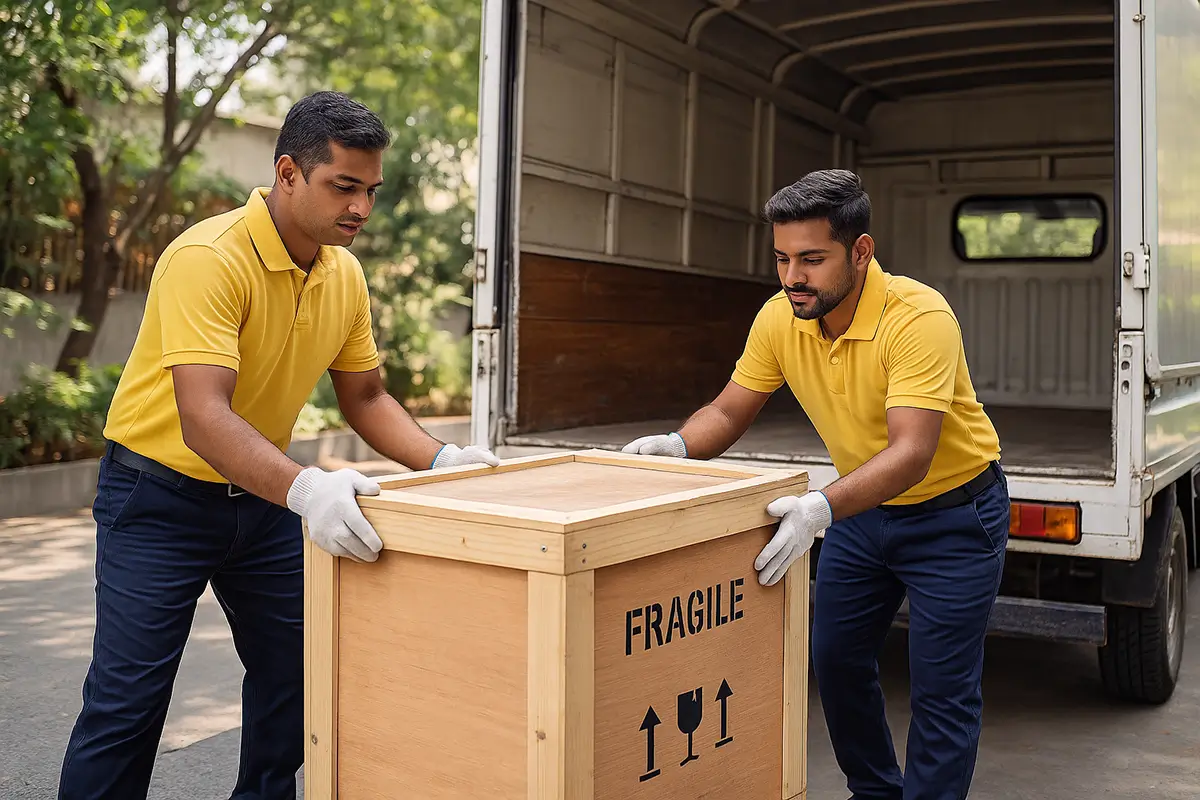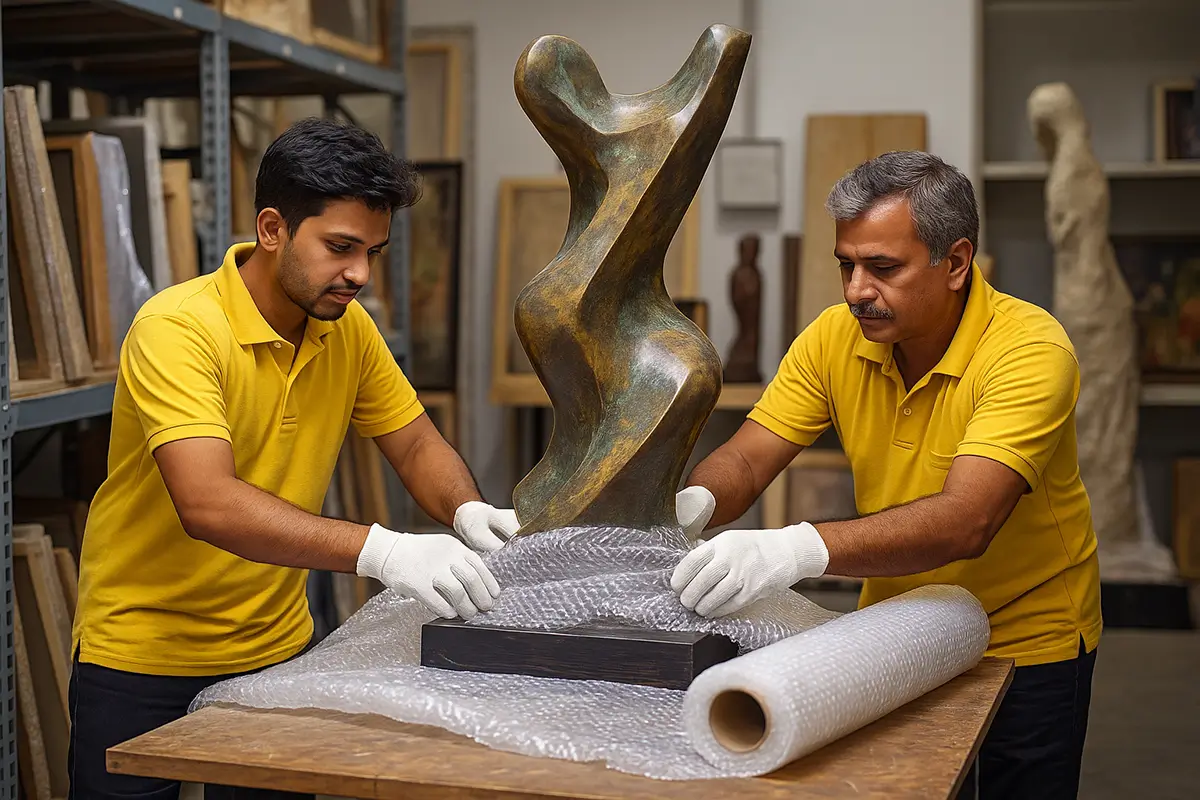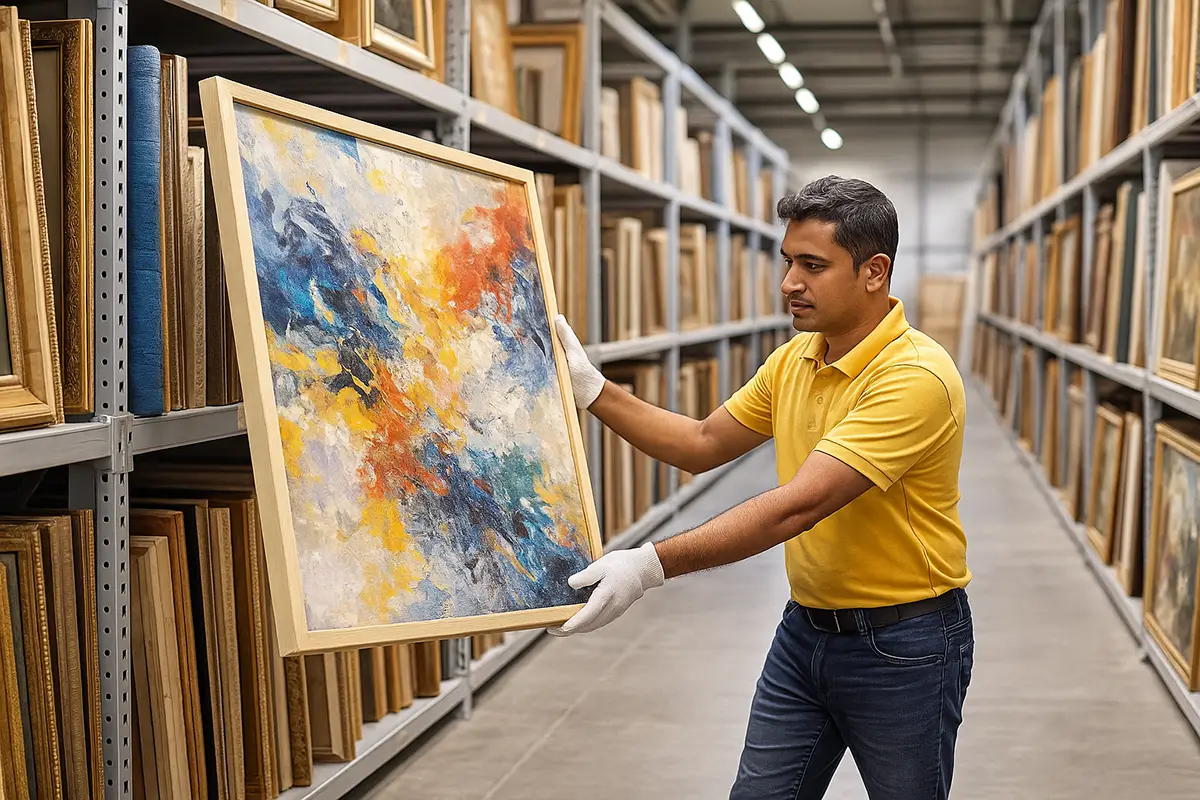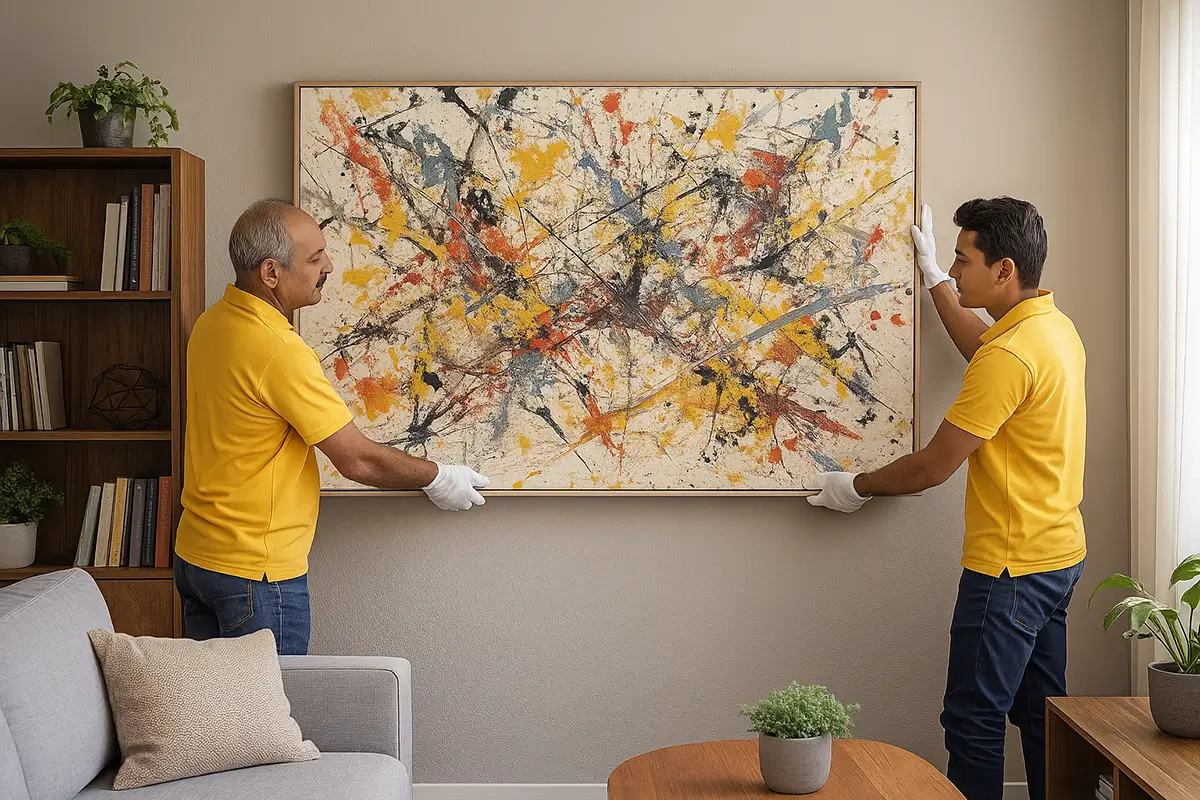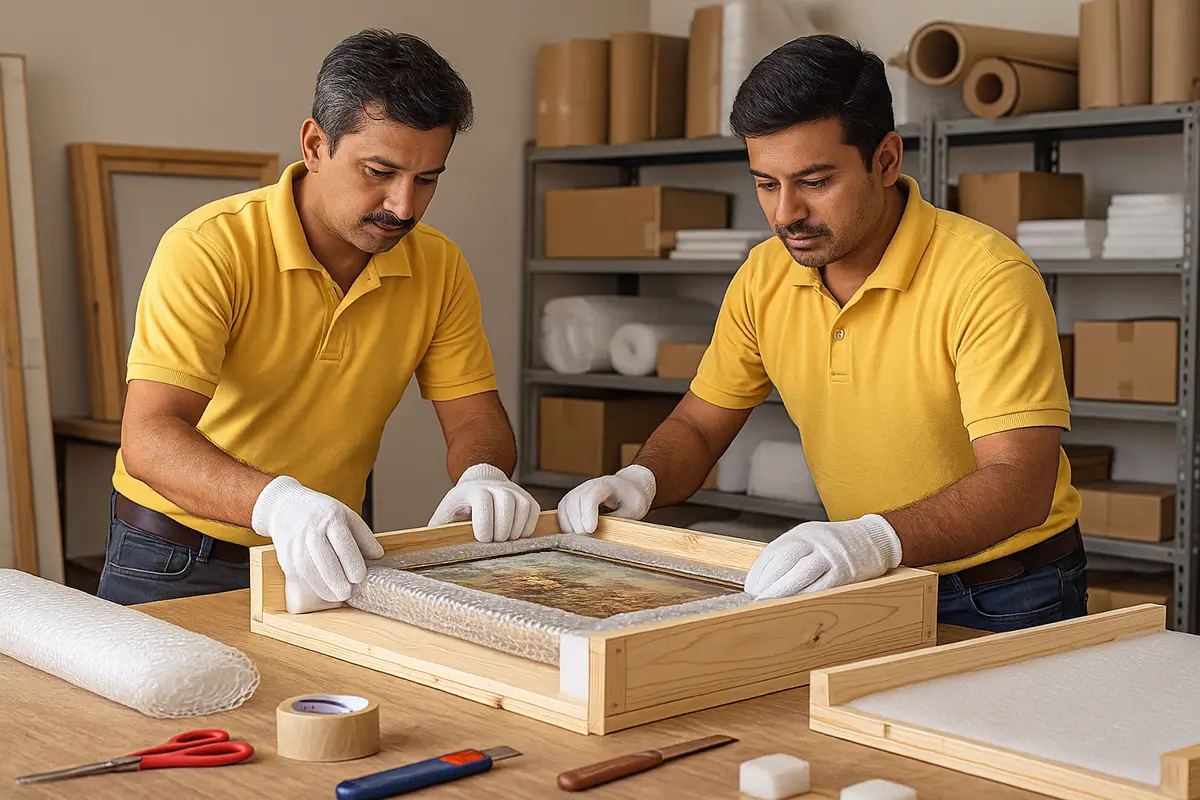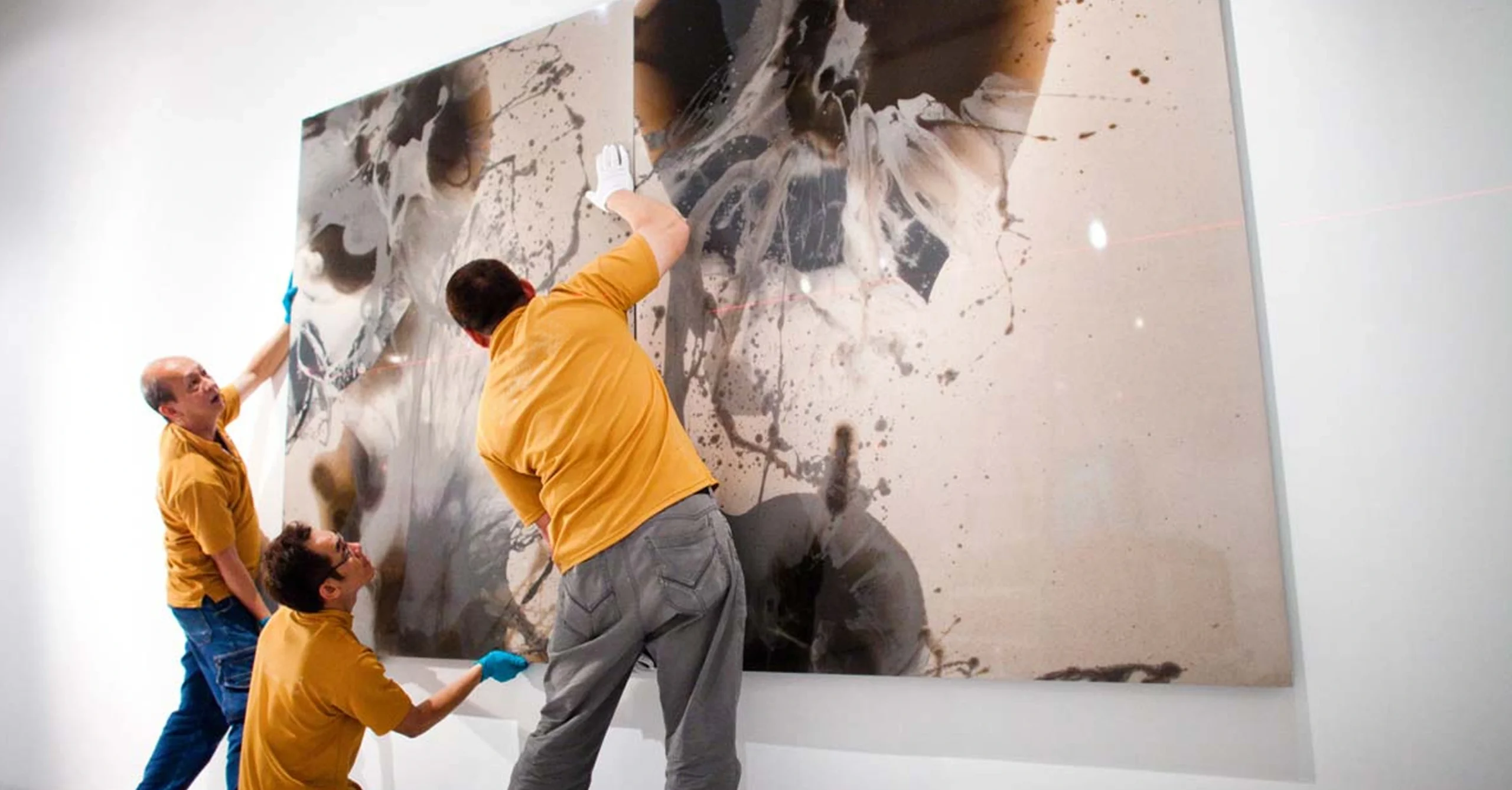Introduction: The journey is as important as the destination
A painting is purchased in a gallery in Mumbai. A sculpture is loaned to a museum in Delhi. A set of photographs needs to reach an exhibition in London. Each of these moments shares one critical factor: the artwork must be transported safely.
Unlike furniture or household goods, art is uniquely fragile. Paint layers can crack with vibration, paper can buckle with humidity, textiles can fray under pressure. The wrong packaging or careless handling can turn a priceless masterpiece into a costly restoration case.
In India, where climate, infrastructure, and logistics networks add layers of complexity, safe packing and transport are not just technical tasks—they are specialised practices. This blog provides a detailed guide to art logistics in India, outlining the methods, risks, and best practices every collector, gallery, or institution must know.
Why art transport is different from regular logistics
Transporting art is not the same as shipping electronics or furniture. The stakes are higher, the risks more varied, and the margins for error far smaller.
Distinct challenges:
- Fragility: Even small vibrations can damage delicate surfaces.
- Climate sensitivity: Indian summers, monsoons, and dust storms all impact artworks.
- Size and shape variability: From miniature works to monumental installations.
- Insurance and liability: Requires accurate valuation and documentation.
- Legal compliance: Especially for antiquities and cross-border shipments.
This is why art logistics is a specialised discipline, often handled by trained professionals.
Packing: The first line of defence
1. Assessing the artwork
Before packing begins, logistics professionals carry out a condition assessment:
- Medium (oil, acrylic, paper, sculpture, textile).
- Size and weight.
- Fragile elements (glass, protrusions, old frames).
- Condition issues (cracks, flaking, loose parts).
The assessment guides the choice of packing materials and methods.
2. Primary protection
This is the material that comes in direct contact with the artwork.
- Glassine paper: For protecting surfaces from smudges.
- Acid-free tissue: Prevents chemical reactions.
- Polyethylene sheets: Guard against moisture.
3. Secondary protection
Layers that add cushioning and stability.
- Bubble wrap (non-abrasive): For shock absorption.
- Foam boards: For rigidity.
- Corner protectors: For framed works.
4. Crating
For transport beyond short distances, professional custom-built crates are essential.
- Plywood crates: With internal cushioning, ventilation, and humidity control.
- Modular crates: Reusable for frequent transport.
- Shock and tilt indicators: To monitor handling en route.
5. Climate considerations
- Silica gel packets: Control humidity.
- Insulated lining: Protects against heat.
- Vapour barriers: Guard against condensation.
Pro tip: Never reuse random packaging boxes. Art requires archival-grade, tested materials.
Transport methods in India
1. Road transport
- Common for inter-city transfers (Mumbai–Pune, Delhi–Jaipur).
- Risks: potholes, vibrations, delays, heat.
- Mitigation: climate-controlled vans, air-ride suspension vehicles, GPS tracking.
2. Air transport
- Essential for national and international shipments.
- Risks: handling at cargo terminals, pressurisation changes.
- Mitigation: professional packing, supervision during loading/unloading, air-cargo partnerships with art experience.
3. Rail transport
- Rarely used for high-value art due to vibration risks and handling challenges.
- Limited to bulk transport of less fragile displays with professional supervision.
4. Sea transport
- Used for very large works or long-term relocations.
- Risks: humidity, long transit times, handling at ports.
- Mitigation: sealed climate-controlled containers.
Risks in art transport (India-specific)
Climate risks
- Monsoons cause high humidity and water seepage.
- Summers expose works to heat beyond 40°C.
- Dust and pollution infiltrate packaging if not sealed.
Infrastructure risks
- Uneven roads and long travel times increase vibration damage.
- Loading docks without specialised equipment raise handling risks.
Handling risks
- Untrained labour may tilt, drop, or mishandle works.
- Frequent transfers between carriers increase exposure.
Security risks
- Theft during transit or at storage stops.
- Smuggling and customs issues for cross-border transport.
Best practices for safe art logistics
1. Always document condition
Prepare a condition report with photos before transport. This protects against disputes and supports insurance claims.
2. Work with professional art shippers
Regular movers are not equipped for art. Specialists understand materials, packing, and handling protocols.
3. Use climate-controlled vehicles
Especially important for works on paper, textiles, and paintings vulnerable to heat and humidity.
4. Schedule smartly
Avoid monsoon or peak-heat months if possible. Plan around weather forecasts.
5. Insurance coverage
Ensure transit insurance with replacement value. Confirm if the policy covers all stages: packing, storage, and transport.
6. Secure storage en route
If stops are required, ensure climate-controlled, security-monitored storage facilities.
7. Train staff
Collectors and galleries should train internal staff in basic art handling to reduce risks during packing and unpacking.
Case examples
Case 1: Gallery in Mumbai shipping to New York
A gallery shipped contemporary works for an international art fair. Each piece was crated with humidity controls and shock monitors. During the flight, turbulence caused concerns, but upon arrival, monitoring devices confirmed the works had been handled within safe ranges. Insurance remained valid, and no damage occurred.
Case 2: Corporate collection transfer in Bengaluru
A company relocated offices with over 100 artworks. Partnering with art logistics experts ensured custom crating, climate vans, and secure overnight storage. The relocation finished without a single loss or claim.
Case 3: Private collector in Chennai
Attempted to transport works with general movers, leading to scratches and one broken frame. After switching to professional art logistics services, subsequent shipments were incident-free.
The role of valuation in transport logistics
Every transport operation should be accompanied by valuation and insurance documentation.
- Replacement value reports ensure adequate coverage.
- Authentication records confirm legitimacy for customs clearance.
- Condition reports form the baseline for claims.
Without these, even the best packing may not protect financial risk.
The legal and regulatory landscape in India
- Antiquities and Art Treasures Act (1972): Governs export of works over 100 years old. Requires permits from the Archaeological Survey of India (ASI).
- Customs regulations: Mandate proper invoices and declared values for import/export.
- Insurance regulations: Require defensible replacement values.
Non-compliance can cause delays, seizures, or legal liability.
How professional services make the difference
Specialist providers such as Art Logistics Services combine technical expertise with regulatory knowledge. Their services include:
- Condition reporting and cataloging.
- Custom-built packing and crating.
- Climate-controlled vehicles.
- Insurance facilitation with valuation.
- Cross-border customs compliance.
For corporates, galleries, and private collectors, outsourcing to professionals reduces both financial and reputational risks.
Future of art logistics in India
As India’s art ecosystem expands, logistics is becoming more sophisticated. Emerging trends include:
- Smart packaging with sensors for humidity and shock.
- Blockchain-enabled tracking of shipments for provenance assurance.
- Regional art storage hubs with climate-controlled facilities.
- AI forecasting for optimal shipping routes and weather risks.
These innovations will make safe art transport more reliable and accessible in the years to come.
Conclusion: Protecting art on the move
Art’s journey doesn’t end at the studio or gallery—it often travels across cities, countries, and continents. But every journey carries risk. In India, where climate, infrastructure, and regulatory challenges add layers of complexity, safe packing and transport are non-negotiable.
With professional packing, climate control, condition reporting, insurance, and compliance, artworks can move safely—ensuring both their cultural value and financial worth remain intact.
Discover our Art Logistics Services. At TurmericEarth, we specialise in end-to-end art transport, from custom crating to insurance facilitation, giving collectors, corporates, and institutions complete confidence that their artworks are protected—wherever they go.



